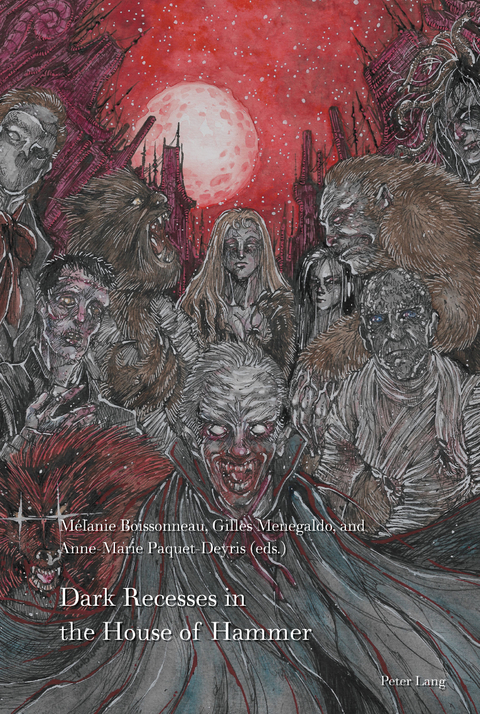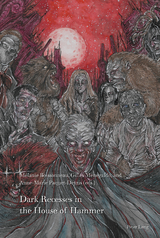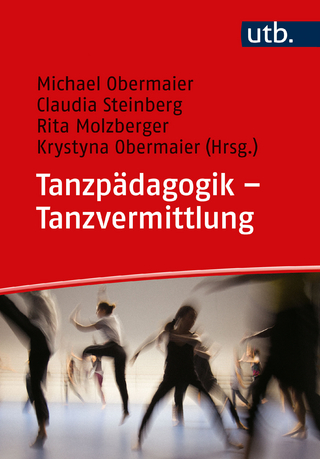Dark Recesses in the House of Hammer
Peter Lang Publishing Inc (Verlag)
978-1-4331-8658-5 (ISBN)
Twenty years after Universal horror movies, the Hammer studio brought back to life the great mythical figures inspired from British literature as well as French and European folklore (Dracula, Frankenstein, the Werewolf, the Phantom of the Opera, etc.). It invented new incarnations rooted in a precise historical context and revisited according to the evolution of British society. This independent studio constitutes a notable stage in the history of the genre between the Gothic horror of the 1930s and the more radical productions of the 1970s, which eventually contributed to its demise. Focusing on the peculiar balance between Hammer’s inventiveness and classicism, this volume mainly explores the lesser-known productions, examining as well its contradictions, paradoxes and limitations.
The book raises the question of the paradoxical modernity of films that are innovative in various respects (themes, modes of representation challenging censorship, aesthetics), but are also trying to resurrect a dying tradition, mostly offering a rather surprisingly conservative discourse despite their efforts to comply with the expectations of new audiences. The films born from the recent Hammer renaissance are still referring to this bygone Golden Age of the horror film. One may wonder whether the Hammer studio was a mere factory churning out mostly conventional horror films now buried in the dust of a gothic dungeon, or a true laboratory of modern cinematic horror whose past glory still inspires contemporary filmmakers. This volume will provide some answers and raise quite a few questions.
Mélanie Boissonneau received her Ph.D. in film studies. She is the author of Pin-up au temps du Pré-Code : 1930-1934 (2019) and co-editor of Tim Burton, horreurs enfantines (2016) and Cinéphilies/sériphilies 2.0, Les nouvelles forms d’attachement aux images (Peter Lang, 2019). Gilles Menegaldo is Emeritus professor of literature and film (University of Poitiers). He is the author of Dracula, la Noirceur et la grâce (with A-M Paquet-Deyris), 130 articles on literature and cinema, and 35 edited collections of essays. His recent publications include Tim Burton, a Cinema of Transformations (2018) and Spectres of Poe with J. Dupont (2020). Anne-Marie Paquet-Deyris is Professor of Film and TV Series Studies and (African) American Literature at University Paris Nanterre. She wrote over 80 articles and 21 books, among the latest, 3 co-edited collections of essays, Vérités et mensonges dans le cinéma hollywoodien (Truths and Lies in Hollywood Film) with D. Sipière (2021), Histoire, légende, imaginaire : Nouvelles études sur le Western (2018) on the history of the American West in the western film genre, and Combining Aesthetic and Psychological Approaches to TV Series Addiction (2018).
List of Illustrations – Notes on Contributors – Antonio Sanna: Preface: The Need for Hammer Films – Mélanie Boissonneau, Gilles Menegaldo, Anne-Marie Paquet-Deyris: Introduction: Dark Recesses in the House of Hammer – Isabelle Labrouillère: Intermediality as a Way to Debunk Tradition: New Perspectives on Terence Fisher’s The Curse of Frankenstein (1957) – Dorota Babilas: The Phantom of the Opera Goes Victorian – Hélène Valmary: Acting Hammer Style: About Peter Cushing and Christopher Lee – Jean-François Baillon: Hammer Motel: Twisted Nerves and Twisted Plots in the Post-Psycho British Psycho-Thriller – Gaïd Girard: Hammer Science-Fiction Horror and the Decline of the British Male Hero: The Quatermass Trilogy – David Roche: The Political Complications of Revamping the Horror Canon: The Vampire Lovers (Baker, 1970), Dr. Jekyll & Sister Hyde (Baker, 1971), Dracula A.D. 1972 (Gibson, 1972) and The Satanic Rites of Dracula (Gibson, 1973) – Jean-Pierre Naugrette: Why Does Sherlock Holmes Capture the Black Rook of Dr. Mortimer in Terence Fisher’s The Hound of the Baskervilles (1959)? – Cécile Carayol: The Vampire Figure: Recurring Principles in Hammer’s Symphonic Film Music until Twilight: New Moon – Jean-Michel Durafour: Terence Fisher with a Lake Scenery – Raphaëlle Costa De Beauregard: Jack Asher (1916–1991) and the Creation of an Original ‘Eastman Color’ Hammer: Between Hollywood Color Tropes and Aesthetic Innovation – Robynn J. Stilwell: The Sonic Realm in The Quatermass Experiment: Medium and Genre and Sound – Philippe Met: Hammer’s Children, Between Visuality and Aurality – Christian Chelebourg: Beauty is the Beast: Horror According to John Gilling – Rehan Hyder: Unmasking the Other: Danger and Difference in Hammer’s Colonial Horrors – Vicky Walden: Postcolonial Anxieties in Hammer’s Dracula and The Curse of Frankenstein – Jean-Marie Lecomte: Epistemology and Power Politics in The Abominable Snowmen (1957) and Lesser-Known Hammer Gothics – Ian Conrich: Hammer Hybrids, Genre Mutation and 1970s Horror Cinema – Matt Jones: Reigniting the Blaze: Hammer’s Unmade Remake of The Day the Earth Caught Fire – Marisa C. Hayes – Mapping Cult Topographies and Transgressive Space: Hammer’s Legacy in The Rocky Horror Picture Show – Sophie Mantrant: A New Old Hammer? The Woman in Black (James Watkins, 2012) – General Bibliography – Index.
| Erscheinungsdatum | 29.09.2022 |
|---|---|
| Reihe/Serie | Film Cultures ; 11 |
| Mitarbeit |
Herausgeber (Serie): Andrew McGregor, Philippe Met |
| Zusatzinfo | 67 Illustrations |
| Verlagsort | New York |
| Sprache | englisch |
| Maße | 150 x 225 mm |
| Gewicht | 601 g |
| Themenwelt | Kunst / Musik / Theater ► Film / TV |
| Kunst / Musik / Theater ► Theater / Ballett | |
| Sachbuch/Ratgeber ► Sport ► Tanzen / Tanzsport | |
| ISBN-10 | 1-4331-8658-6 / 1433186586 |
| ISBN-13 | 978-1-4331-8658-5 / 9781433186585 |
| Zustand | Neuware |
| Haben Sie eine Frage zum Produkt? |
aus dem Bereich




